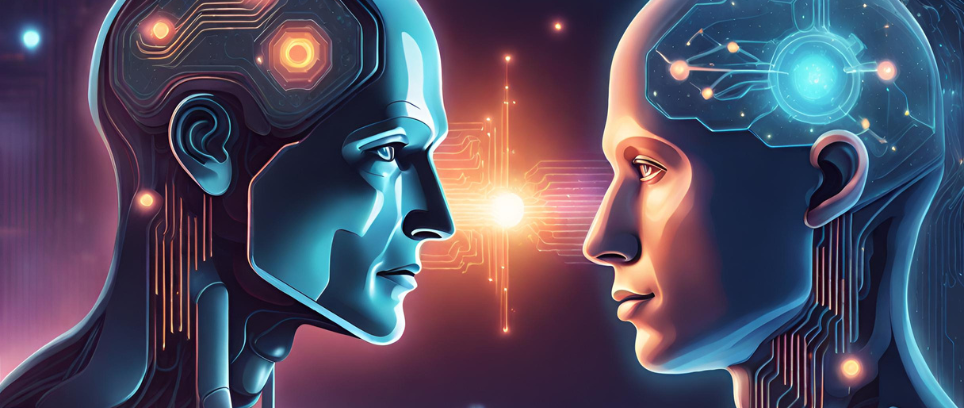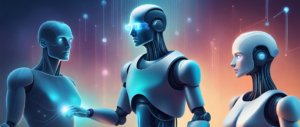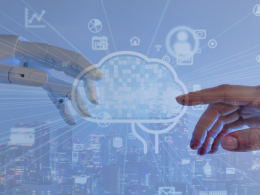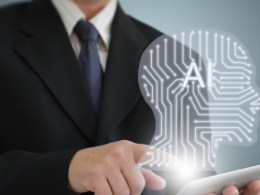Embarking on a journey through the realms of Data Science, Machine Learning, and Artificial Intelligence (AI) is akin to navigating a complex labyrinth of technologies that shape the future.
In this in-depth exploration, we untangle the intricacies of each domain, shedding light on their distinctive roles while uncovering the seamless connections that bind them together.
Let’s embark on this enlightening odyssey through the evolving world of data, algorithms, and intelligent systems.
Data Science Overview
Data Science is a broad field focused on studying data systems and processes, aiming to manage and derive meaning from extensive datasets.
Data scientists use various tools, including SQL, Python, and statistical analysis, to model and warehouse data, providing insights for informed decision-making.
Scope of Data Science
One of the direct impacts of data science is on business intelligence.
Data scientists analyze patterns and trends, creating reports that guide organizational goals. The role transitions seamlessly into Business Intelligence, where insights from data science reports inform business forecasts.
Data Science Skills
Data scientists possess a diverse skill set, including programming in R, Python, SQL, SAS, MATLAB, and STATA. Other essential skills include data wrangling, data visualization, statistical analysis, and machine learning.
| Skill Category | Skills |
|---|---|
| Programming | R, Python, SQL, SAS, MATLAB, STATA |
| Data Wrangling | Cleaning, Manipulating, Exploring Data |
| Data Visualization | Creating Graphs and Charts to Visualize Data |
| Data Analysis | Conducting Statistical Analyses of Data |
| Machine Learning | Building Algorithms to Learn from Data |

Artificial Intelligence Deconstructed
Artificial Intelligence (AI) aims to enable machines to execute reasoning by replicating human intelligence.
It involves deep learning and natural language processing to help machines identify patterns and make inferences.
Scope of Artificial Intelligence
AI facilitates automation, turns products into intelligent commodities, supports progressive learning, and enhances data analysis through neural networking.
Artificial Intelligence Skills
AI skills span:
- Data analysis
- Pattern recognition
- Machine learning
- Natural language processing
- Robotics
- Predictive modeling
- Computer vision
- Expert systems
- Neural networks
| Skill Category | Skills |
|---|---|
| Data Analysis | Analyzing and Interpreting Data |
| Pattern Recognition | Identifying Patterns in Data |
| Machine Learning | Implementing Machine Learning Algorithms |
| Natural Language Processing | Processing and Understanding Human Language |
| Robotics | Developing and Implementing Robotic Systems |
| Predictive Modeling | Building Models to Predict Future Outcomes |
| Computer Vision | Enabling Machines to Interpret Visual Information |
| Expert Systems | Creating Systems that Mimic Human Expertise |
| Neural Networks |
Implementing Neural Networks for AI Applications |
Machine Learning Unveiled
Machine Learning (ML), a subset of AI, focuses on systems that can automatically learn and improve from experience without explicit programming.
Types of Machine Learning
-
Supervised Machine Learning: Utilizes historical data to understand behavior and formulate future forecasts.
-
Unsupervised Machine Learning: Analyzes unlabeled data to discover hidden structures and infer functions.
-
Semi-Supervised Machine Learning: Combines elements of both supervised and unsupervised learning for improved accuracy.
-
Reinforcement Machine Learning: Learns from experience through trial and error, without using a predefined answer key.
Machine Learning Skills
Machine learning skills include identifying patterns, building models for predictions, tuning parameters for optimization, evaluating accuracy, and working with large datasets.
| Skill Category | Skills |
|---|---|
| Pattern Identification | Identifying Patterns in Data |
| Model Building | Constructing Models for Predictions |
| Parameter Tuning | Adjusting Model Parameters for Optimal Performance |
| Accuracy Evaluation | Assessing Models for Accuracy |
| Large Dataset Handling | Working with Large Datasets for Training and Evaluation |
AI vs. Machine Learning: Key Differences
In this table, we highlight the distinctive features that differentiate Artificial Intelligence from Machine Learning, providing a concise overview of their respective roles and applications.
| Aspect | Artificial Intelligence (AI) | Machine Learning (ML) |
|---|---|---|
| Inclusion Relationship | Encompasses Machine Learning. | A Subset of Artificial Intelligence. |
| Working Principle | Involves iterative processing and intelligent algorithms. | Utilizes efficient programs for learning from data. |
| Popular Tools | TensorFlow, Scikit Learn, Keras. | Amazon Lex, IBM Watson Studio, Microsoft Azure ML Studio. |
| Model Logic | Uses logic and decision trees. | Uses statistical models. |
| Applications | Virtual assistants, chatbots, voice assistants. | Recommendation systems, facial recognition. |
Data Science vs. Machine Learning: A Comparative Overview
This table provides a quick reference to the key distinctions between Data Science and Machine Learning, encompassing their focus, skill requirements, system preferences, and approaches to handling and transforming data.
| Aspect | Data Science | Machine Learning |
|---|---|---|
| Primary Focus | Involves creating insights from complex data. | Aims to accurately predict or classify outcomes using patterns in data. |
| Skillset Requirements |
|
|
| Horizontally Scalable Systems | Preferred to handle massive data. | GPUs are preferred for intensive vector operations. |
| Dealing with Data | Components for handling unstructured raw data. | Significant complexity is with the algorithms and mathematical concepts behind them. |
| Input Data Transformation | Most of the input data is in human-consumable form. | Input data is transformed specifically for the type of algorithms used. |
AI vs. Machine Learning vs. Data Science: Key Differences
| Aspect | Artificial Intelligence (AI) | Machine Learning (ML) | Data Science |
|---|---|---|---|
| Inclusion Relationship | Includes Machine Learning. | Subset of Artificial Intelligence. | Includes various Data Operations. |
| Working Principle | Involves iterative processing and intelligent algorithms. | Utilizes efficient programs for learning from data. | Involves sourcing, cleaning, and processing data for analysis. |
| Popular Tools | TensorFlow, Scikit Learn, Keras. | Amazon Lex, IBM Watson Studio, Microsoft Azure ML Studio. | SAS, Tableau, Apache Spark, MATLAB. |
| Model Logic | Uses logic and decision trees. | Uses statistical models. | Deals with structured and unstructured data. |
| Applications | Virtual assistants, chatbots, voice assistants. | Recommendation systems, facial recognition. | Fraud detection, healthcare analysis. |
Relationship between Data Science, Artificial Intelligence, and Machine Learning
In the vast landscape of applications and systems, Artificial Intelligence (AI) and Data Science converge to replicate human intelligence through machines.
AI orchestrates a strategic cycle of Perception, Planning, Action, and Feedback, forming an action-planned feedback loop.
Perception > Planning > Action > Feedback of Perception
Within this framework, Data Science leverages distinct elements.
- In the Perception phase, data scientists discern patterns from data.
- In Planning, they navigate through myriad solutions, aiming to identify the optimal one among them. This orchestrated system propels businesses forward.
While Machine Learning can be explained in isolation, its true essence unfolds within the broader context of its environment — the system it operates within.
Acting as the crucial link, Machine Learning connects Data Science and AI. It is the dynamic process of learning from data over time.
AI serves as the tool empowering Data Science to yield results and solutions, with Machine Learning playing a pivotal role in achieving these objectives.
Take, for example, Google’s Search Engine, a testament to the seamless integration of Data Science, AI, and Machine Learning. Employing predictive analysis, an AI-driven system, it delivers intelligent results. When a user types “best jackets in NY,” the AI, fueled by machine learning, anticipates the next query, completing the sentence with the most probable suffix — “best place to buy jackets in NY.”
In essence, Data Science encompasses AI, which includes Machine Learning.
Further delving into Machine Learning, we encounter Deep Learning, a subset distinguished by the utilization of Neural Networks.
This technology emulates the brain’s function to a certain extent, employing a 3D hierarchy in data to identify patterns more effectively.
The synergy between Data Science, AI, and Machine Learning not only exemplifies technological prowess but also paves the way for advancements in understanding, prediction, and problem-solving in the digital era.
Machine Learning vs. Data Science Salary
Machine Learning Engineer Salary
| Company | Salary |
|---|---|
| Deloitte | ₹ 6,51,000 PA |
| Amazon | ₹ 8,26,000 PA |
| Accenture | ₹15,40,000 PA |
Data Scientist Salary
| Company | Salary |
|---|---|
| Microsoft | ₹ 1,500,000 PA |
| Accenture | ₹ 10,55,500 PA |
| Tata Consultancies | ₹ 5,94,050 PA |
FAQs – Artificial Intelligence, Data Science, and Machine Learning
1. Are Machine Learning and Data Science the same?
No, they are distinct domains with interconnections.
2. Which is better, Machine Learning or Data Science?
Both have unique roles; Data Science is established, while ML technologies are gaining relevance.
3. Is Data Science required for Machine Learning?
Basic knowledge of Data Science is essential, as they are closely linked.
4. Who earns more, Data Scientist or Machine Learning Engineer?
At entry-level, Data Scientists may earn more, but at senior levels, both professions have comparable salaries.
5. What is the Future of Data Science?
Integral to the future, with endless possibilities across industries for data-driven decisions.
6. Can a Data Scientist become a Machine Learning Engineer?
Yes, with the right upskilling, a Data Scientist can transition to become a Machine Learning Engineer.
Conclusion
In summary, while AI, Data Science, and Machine Learning are interconnected, each serves a unique purpose.
Data Science is a broad term encompassing various data operations, while Machine Learning falls within it, and AI includes Machine Learning.
The future promises exciting opportunities in these fields, with professionals equipped with the right skills in high demand.
Explore all the courses at Accredian, and advance your skills in-demand in AI, Data Science, and Machine Learning.








